The Solana community is filled with innovation and is anticipated to shake up the blockchain world. The platform has included modern options that permit it to function as much as 50,000 transactions per second.
How is all this doable and how does Solana work? Learn on to grasp what the way forward for blockchain will seem like.
Historical past and evolution of Solana (SOL)
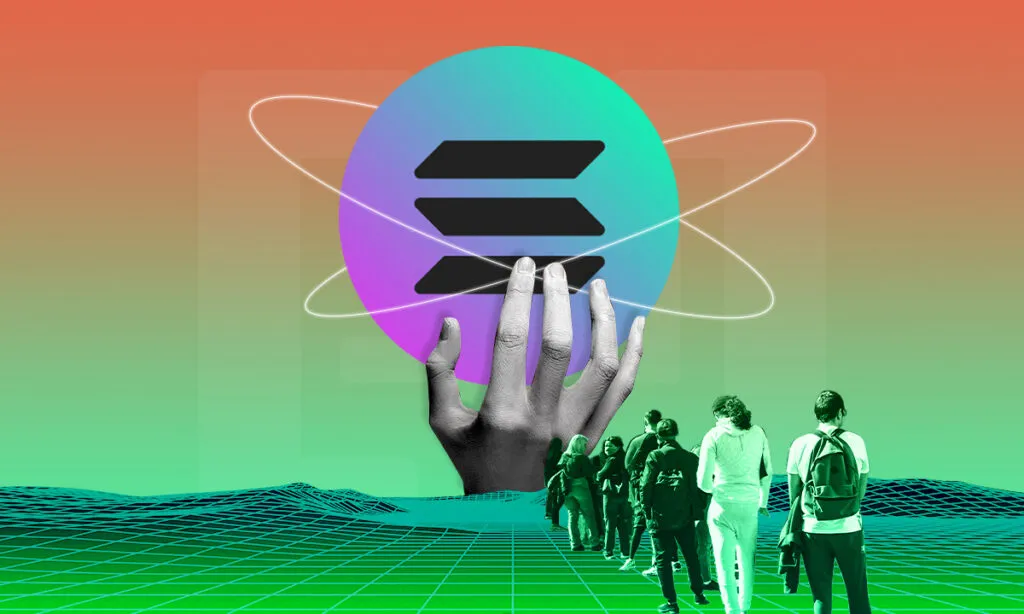
What is Solana (SOL) and the way did it come to fruition?
Anatoly Yakovenko, a former Qualcomm and Dropbox contributor, based and introduced the platform in 2017 when he printed the Solana whitepaper . He’s a software program engineer with expertise in compression algorithms and distributed techniques. Along with Eric Williams and Solana CTO Greg Fitzgerald, the staff goals to make Solana a distributed, trustless protocol to handle conventional issues that exist on the Bitcoin and Ethereum blockchains.
Solana’s whitepaper is the primary written reference to Proof-of-Historical past , described as a brand new type of timekeeping for distributed techniques on the blockchain .
The staff launched the Solana platform testnet in February 2018. The corporate behind the platform, Solana Labs, was initially called Loom . The name was later changed to avoid confusion with Loom Network, which is a multichain interoperability resolution.
Solana raised over $5 million from two seed rounds earlier than Sequence A. In 2019, Solana Labs accomplished a $20 million Sequence A funding spherical led by Multicoin Capital. Following its launch public sale on CoinList, Solana raised one other $1.76 million.
The beta mainnet was launched in March 2020 and presents fundamental transaction capabilities and sensible contracts.
At present, the Solana staff has gained expertise working for the world’s main firms (Apple, Qualcomm, Intel, Google, Microsoft, Twitter, Dropbox, and others). To date, Solana has acquired the eye of many investors, together with Multicoin Capital, Basis Capital, SLOW Capital, CMCC World, Summary Ventures, and plenty of extra.
Solana Labs is at present the biggest contributor to the community . The Solana Basis, a non-profit basis, is actively concerned in funding and growing group initiatives.
What precisely is Solana?
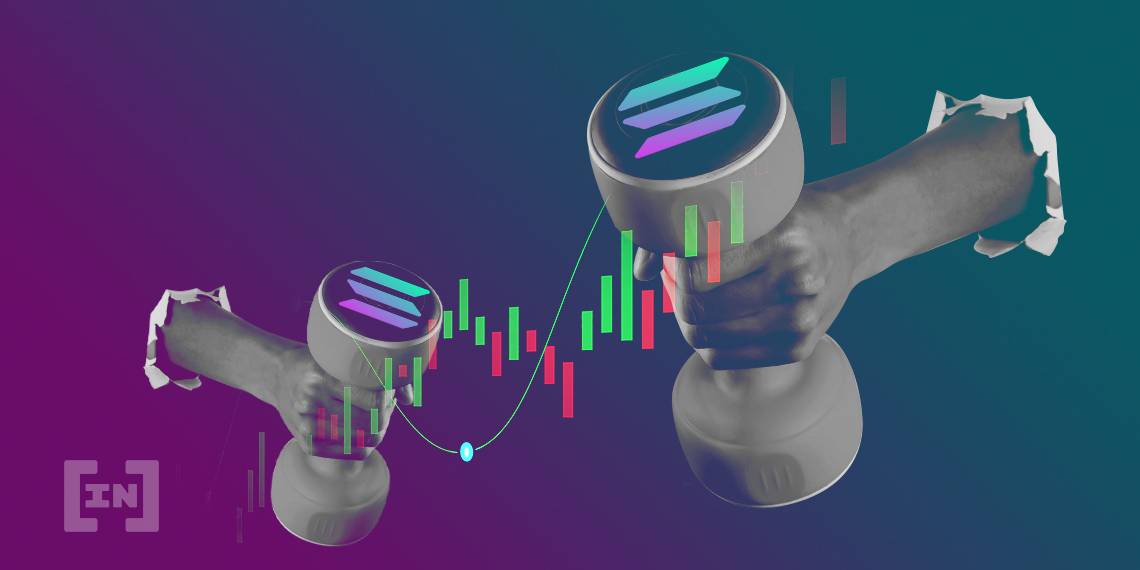
Decentralized transactions are made doable by blockchain know-how . However the know-how we use to switch cryptocurrencies has one main downside: it’s gradual. To place issues into perspective, think about the Ethereum community, which might course of round 15 transactions per second (TPS), in comparison with tens of 1000’s on Visa’s community.
And that is precisely what Solana goals to vary for the higher. So what’s Solana?
Solana is a programmable blockchain that strives for high-speed transactions with out dropping its core function: decentralization. The community makes use of a novel mechanism referred to as Proof-of-Historical past . SOL, the blockchain ‘s native token, is used for transaction charges and can be staked. Solana is a direct competitor to the Ethereum community.
What’s a programmable blockchain ?
Not like Bitcoin, which is primarily a enormous, immutable ledger, Solana employs sensible contracts . These sensible contracts are items of code that set off actions upon the achievement of sure circumstances.
Ethereum uses smart contract performance to deploy decentralized functions (dApps). Nevertheless, the sheer quantity of those self-executing contracts clogged the community.
Think about Ethereum’s comparatively low tps and the big variety of smart contracts. The community is gradual, has enormous switch charges, and has an enormous carbon footprint, because it nonetheless operates on the proof-of-work consensus.
Till Ethereum 2.0 absolutely rolls out, it ought to depart room for next-gen blockchains to get a share of the dapp market. ETH 2.0 is because of occur in 2022. To date, Solana is the quickest programmable blockchain.
Think about Ethereum’s comparatively low TPS and the big variety of sensible contracts. The community is gradual, has enormous switch charges, and has an enormous carbon footprint because it nonetheless operates on Proof-of-Work consensus.
Till Ethereum 2.0 is absolutely deployed, it ought to depart room for next-generation blockchains to realize a share of the DApps market. ETH 2.0 is deliberate to occur in 2022. To date, Solana is the quickest programmable blockchain .
Solana operates on an tailored Proof-of-Stake consensus mannequin, on high of which cutting-edge core improvements have been applied.
What makes Solana so quick is this mixture of eight modern options:
- Proof-of-history
- Tower BFT
- Gulf Stream
- Turbine
- Sealevel
- Pipelining
- Cloudbreak
- Archivers
PoH: What’s Proof-of-Historical past?
Solana dropped at the group a brand new resolution to make a extra decentralized blockchain . This method, referred to as Proof-of-Historical past (PoH) incorporates historic information of transactions into the blockchain . Due to this, it’s doable to show that such transactions really occurred earlier than they’re included within the blockchain .
On the Solana blockchain , transactions are embedded with timestamps. These assist set up the sequence of occasions that have been processed earlier than the newest state of the blockchain is broadcast to the complete community.
These transactions or occasions which are evaluated are given a singular hash and a rely that may be publicly verified . This rely acts as a cryptographic timestamp, because it permits us to know when every transaction or occasion occurred.
To do that, inside every node there’s a cryptographic clock that retains observe of community time and the order of occasions . This enables for prime efficiency and higher effectivity throughout the Solana community.
PoH is achieved by nodes, as every has its personal clock, and is the primary purpose for the community’s effectivity. However, Bitcoin makes use of Proof-of-Work consensus . This requires miners to validate transactions and produce new BTC with every new block. Miners should cooperate to realize consensus, comparable to establishing when a transaction occurred.
Solana’s creator identified in his whitepaper the important function of Proof-of-Work , which Bitcoin is utilizing: the flexibility to operate as a decentralized clock.
In conventional centralized techniques, there isn’t a want for a clock as a result of all nodes within the system can belief that the timestamps are correct.
As Solana’s creator defined, PoH is a historic report that proves an occasion occurred at a particular cut-off date . Think about taking a photograph of right this moment’s printed newspaper and posting it on-line. Through the use of PoH, Solana’s blockchain can deal with extra transactions, making the platform scalable and extra environment friendly.
Tower BFT: A sensible Byzantine fault tolerance optimized for PoH
Solana implements sensible Byzantine Fault Tolerance, in brief pBFT, which is optimized for PoH. Tower BFT is an algorithm that makes use of PoH as a cryptographic clock to assist it attain consensus with out having to ship a flood of communication between nodes. This algorithm helps drastically enhance transaction pace.
Turbine: The Protocol for Block Propagation
The Solana community makes it simpler to transmit information to every node on its blockchain by breaking it into smaller packets . This helps Solana deal with bandwidth points and improve its means to settle transactions sooner.
Sealevel: Concurrent Good Contracts
Solana’s environment friendly runtime can be aided by the Sealevel engine, which allows parallel transaction processing. It is a elementary growth within the blockchain trade , as Solana is the primary blockchain that may carry out parallel processing for a similar instruction however with totally different inputs.
Gulf Stream: Solana’s mempool administration resolution
Gulf Stream is Solana’s resolution to lowering the pool of unconfirmed transactions. The system pushes the seize and forwarding of transactions to the sting of the community. This enables validators to scale back affirmation instances, execute transactions early, and scale back the reminiscence load coming from the pool of unconfirmed transactions. Gulf Stream allows Solana to succeed in 50,000 transactions per second.
Pipelining: Transaction processing unit to realize single node effectivity
Pipelining is an optimized method of processing the enter information stream, which should be processed in sequential steps. Solana’s CTO in contrast the pipeline course of to the way in which we wash garments. Garments undergo the method of washing, drying , and folding, and every of those steps should be carried out on this order, however by totally different models. This mannequin is usually utilized in UC design and permits transactions to be rapidly validated and replicated throughout all nodes within the community.
Cloudbreak: Solana’s scale-out state structure
Solana makes use of memory-mapped recordsdata and sequential operations to assist with community scalability. Cloudbreak is the information construction that allows sequential writes and concurrent reads throughout the 32 threads supported by the trendy SSD.
Archivers: Solana’s ledger retailer
Archivers are used to retailer information. They obtain information from consensus validators. PoH know-how allows the deployment of Proof-of-Replication (PoRep), for batch verification, on tens of millions of Replicator nodes worldwide. Archivers inform the community what number of bytes they’ve accessible for storage. Based mostly on the full accessible Archiver storage and the variety of Replicator identities, the community splits the ledger into the proper elements to match the replication price and fault tolerance. Archivers are rewarded with roughly 3% of inflation for the storage effort.
How does Solana work?
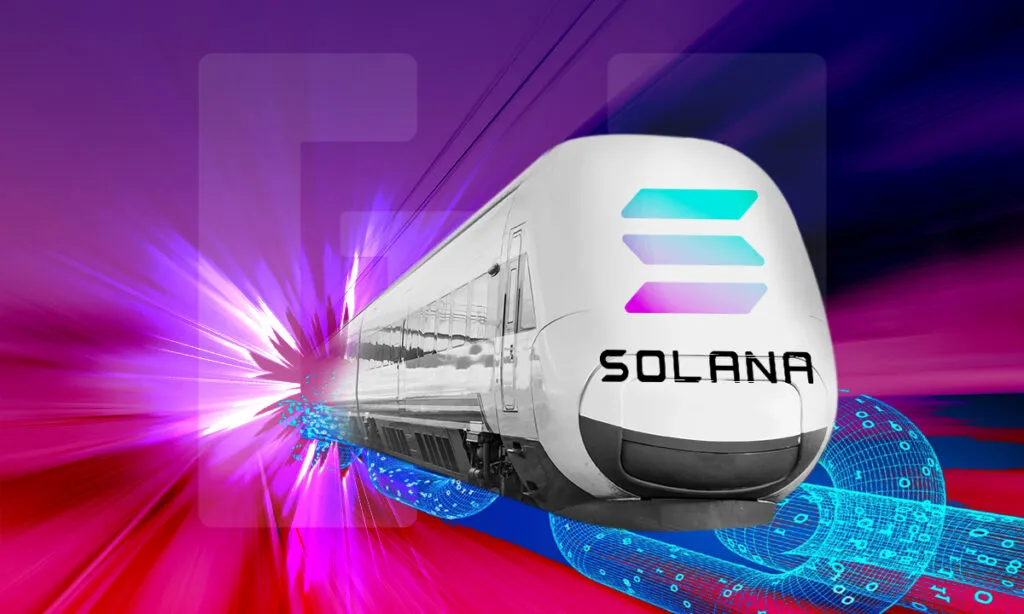
Solana is the world’s first web-scalable blockchain . The platform’s permissionless blockchain can generate 50,000 TPS throughput attributable to its distinctive structure.
Solana is designed to be the quickest blockchain available on the market. It employs eight core options (PoH, Tower BFT, Gulf Stream, Turbine, Sealevel, Pipelining, Cloudbreak, Archivers) that allow it to realize transaction speeds by no means seen earlier than.
Solana uses a PoS consensus mechanism, aided by Tower BFT consensus.
Tower BFT allows the community to succeed in consensus by imposing a common time supply referred to as Proof-of-Historical past . This creates a everlasting reference for all nodes on the community. Don’t confuse Proof-of-Historical past (PoH), the community’s permissionless clock, with a consensus mechanism.
Proof -of-Historical past is a decentralized clock that helps safe the blockchain and is one among Solana’s eight core improvements. Tower BFT makes use of the permissionless clock to hurry up transactions. The transaction parallelization system, Sealevel, permits sensible contracts to run concurrently, utilizing accessible GPUs and SSDs.
The Gulf Stream function is the reminiscence reservation system, usually referred to as mempool. It helps to ship the transactions to the validators earlier than the completion of earlier transactions. This helps to maximise the pace of the transactions.
In a nutshell, Solana processes work like this:
- Receives the interpretation entry within the ledger
- The ledger sequences and orders messages in order that they are often processed by different nodes effectively.
- The identical ledger executes the transactions of the present state and shops them in RAM
- The ledger publishes the transactions and the ultimate state signature to the “Verifiers” (these are the replication nodes)
- Verifiers execute the identical transactions on the copy of the state and publish their signature of the state after they obtain affirmation.
- The printed confirmations would be the votes for the consensus mechanism.
What functions run on Solana?
Now that you’ve a greater understanding of what Solana is, you is perhaps questioning what functions can run on the Solana community.
Solana is a programmable blockchain attributable to its means to work together with sensible contracts, very similar to Ethereum. Good contracts help quite a lot of decentralized functions (DApps), comparable to NFT marketplaces , DeFi video games, and DEXs.
The most well-liked Solana functions are decentralized exchanges (DEXs) and lending functions. The community may also help “ wrapped ” property and stablecoins, comparable to USD Coin. You could find the entire Solana ecosystem here.
Who’re Solana’s opponents?
Most permissionless blockchains see Solana as a possible competitor as it’s a viable various to older sensible contract blockchains . Many evaluate Solana to Ethereum, which is the primary blockchain -based server platform . The primary benefit is that the platform can course of as much as 50,000 TPS, whereas Ethereum’s price is between 15 and 45 TPS.
In comparison in dimension and historic growth, Solana’s opponents embody SKALE Labs, 1Token, ARK, and Cindx. However the fixed enchancment and design of the mission units it other than all present blockchains .
Solana milestone contains over 250 companions
Solana launched its mainnet beta in March 2020. Since then, its native coin, SOL, has risen to change into one of many high 10 cryptocurrencies by market capitalization. Though the community presents full performance, builders are nonetheless engaged on enhancing the community’s options.
Solana already has over 250 tasks and companions , together with USDC, Chainlink, BSN, and Serum. The Solana staff is assured that scalability for DApps is now not a difficulty and goals to draw companions and capital to assist them onboard 1 billion customers.
Solana Labs plans to further accelerate platform constructing and plans to launch an funding and trading desk for the community. You possibly can comply with the Solana staff’s developments on GitHub.
What are the SOL value predictions?
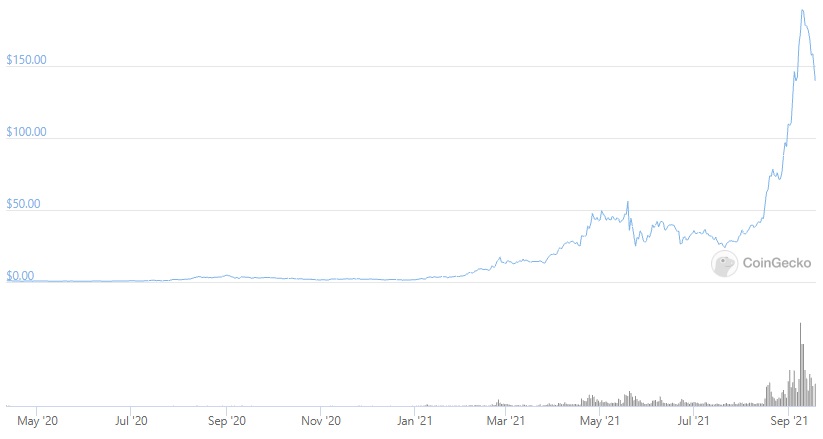
The general growth of the mission and the tasks becoming a member of Solana contributed to the optimistic market sentiment. Solana’s native token (SOL) is used for transaction charges and staking .
The protocol burns all charges paid in SOL, making it a deflationary mechanism and serving to incentivize customers to stake SOL immediately from their supported cryptocurrency wallets. This results in a safer blockchain .
As of September 2021, Solana’s native token (SOL) ranks because the seventh cryptocurrency by market capitalization, with a complete of 296,831,588.35 tokens in circulation.
Given the numerous profitable partnerships, SOL has seen a value improve of 66,000%. The all-time excessive is $214.96, which was reached on September 9, 2021. Traders may also improve their returns by staking SOL.
Solana Token Distribution
As of September 2021, SOL has a circulating provide of $296.69 million.
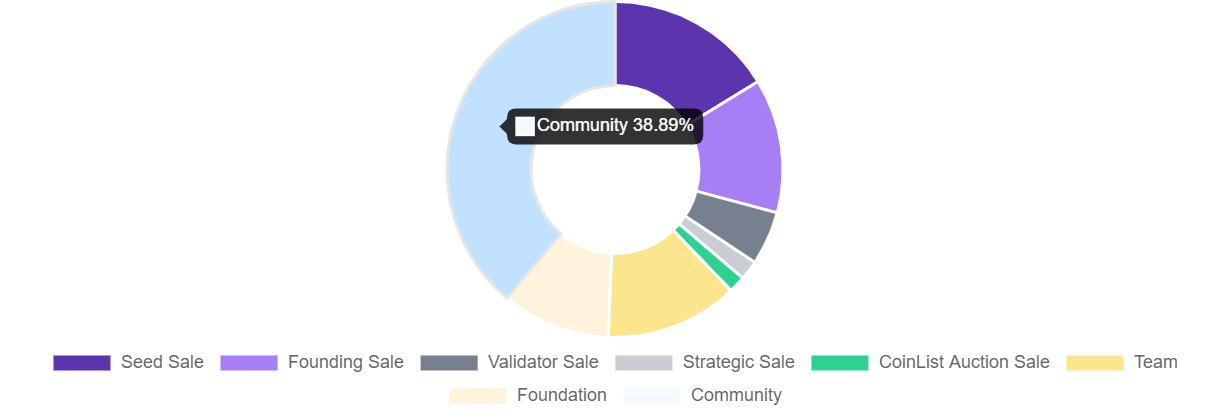
SOL token provide distribution:
- Seed sale tokens comprise 16.23% of the full token provide.
- Basis sale tokens comprise 12.92% of the full token provide.
- Validator sale tokens comprise 5.18% of the full token provide.
- Strategic sale tokens comprise 1.88% of the full token provide.
- CoinList public sale sale tokens comprise 1.64% of the full token provide.
- Group tokens comprise 12.79% of the full token provide.
- Basis tokens comprise 10.46% of the full token provide.
- Group tokens comprise 38.89% of the full token provide.
The Swiss Basis, which has an impartial board, holds the group tokens. These are used for marketing and grants. The Basis tokens are held in Coinbase Custody and chilly wallets. The staff funds are held in a USD checking account.
Funds acquired from token gross sales are allotted as follows:
- 3.00% Associations.
- 3.00% advertising.
- 35.00% Group.
- 35.00% Improvement.
- 12.00% Skilled and authorized companies.
- 3.00% tax.
- 6.00% Workplace Rental.
- 3.00% Others.
Methods to purchase SOL?
Solana is attracting the curiosity of consumers from all around the world, given its speedy growth and enterprise development. Daily, extra cryptocurrency exchanges are itemizing SOL for buying and selling in opposition to fiat or different cryptocurrencies. Traders should buy SOL on Binance, Bitfinex, FTX, Coinbase, and others. SOL can be used for staking .
Solana: a possible market disruptor
Solana has the potential to disrupt the DApp ecosystem with its next-generation capabilities. The platform is an improved blockchain that solves most of the issues that conventional blockchain skilled . Ethereum 2.0 continues to be a methods off, so there’s a likelihood that Solana may discover a stable foothold out there.
















